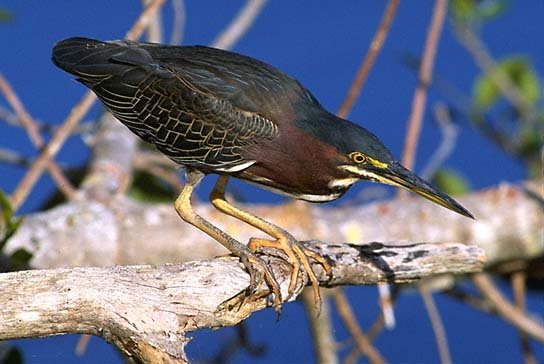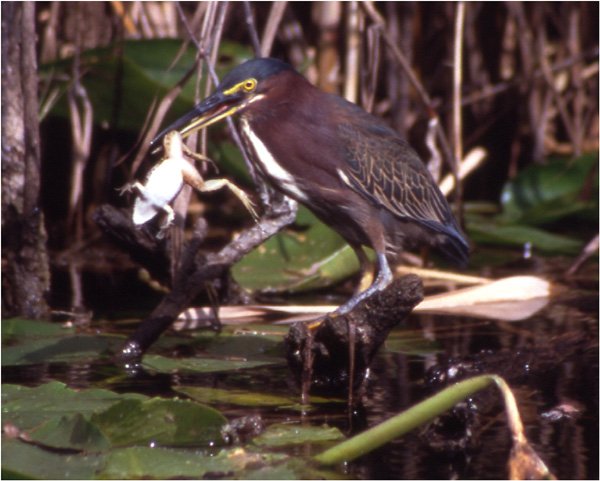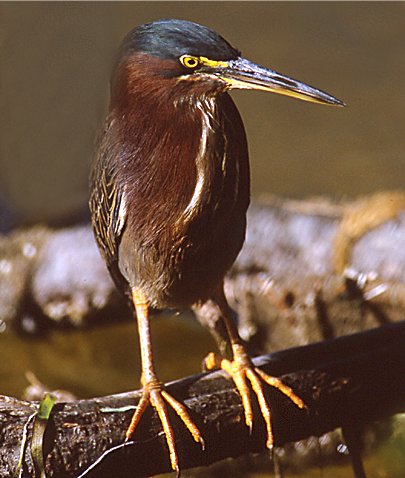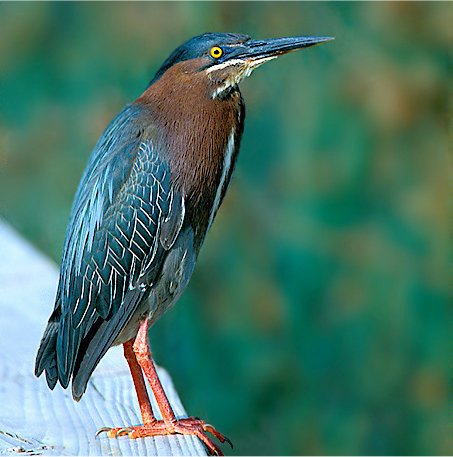Long-legged Waders
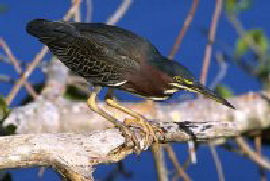 |
Green Heron
Butorides virescens |
Description
16-22" (41-56 cm). A dark, crow-sized
heron. Crown black, back and wings dark gray-green or gray-blue
(depending on lighting); neck chestnut colored. Bill dark; legs
bright orange. Immatures have streaks on neck, breast, and
sides.
HabitatBreeds mainly in freshwater or brackish
marshes with clumps of trees. Feeds along margin of any body of
water.
Nesting3-6 pale green or pale blue eggs in a
loose nest of sticks built in a tree or dense thicket. |
 |
 |
RangeBreeds over a wide region from Canadian
border to Gulf of Mexico, west to Great Plains, western Texas, and
southwestern New Mexico; in West from Fraser River delta of British
Columbia south to California and Arizona. Winters from coastal
California south to southern Arizona and Texas, along Gulf Coast,
and along Atlantic Coast north to South Carolina. |
VoiceCall is a sharp kyowk! or skyow!
DiscussionThe Green Heron is rather solitary,
feeding alone or in pairs. A wary bird, it erects its short crest,
straightens its neck, and nervously flicks its short tail when
alarmed. It is often first noticed when it flushes unexpectedly from
the edge of the water and flies off uttering its sharp call. Our
smallest heron except for the diminutive Least Bittern, the Green
Heron preys on a wide variety of insects, frogs, and small fish; its
broad diet enables it to breed on small inland ponds and marshes
that won't support other herons. It stretches its neck and bill
forward as if taking aim, and, after a few elaborately cautious
steps, seizes the fish with a jab of its
bill. |
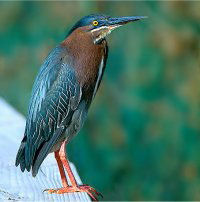 |





